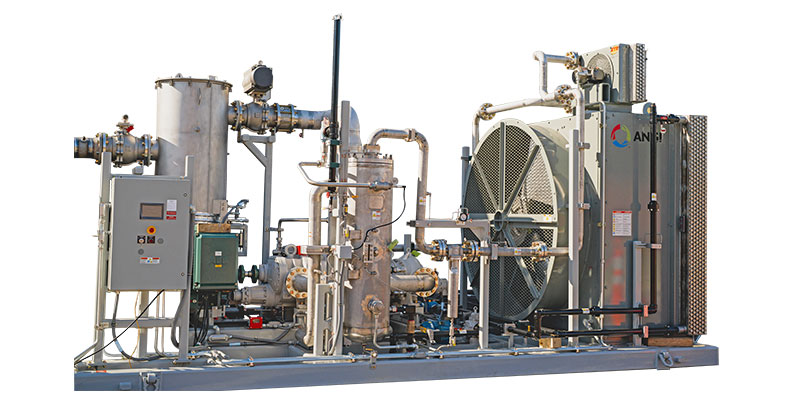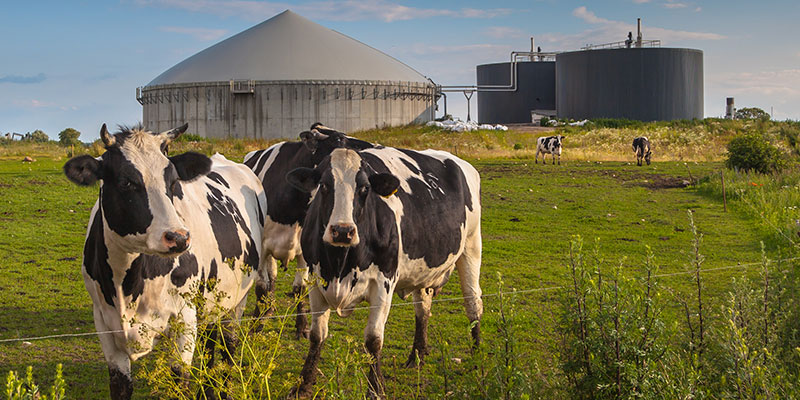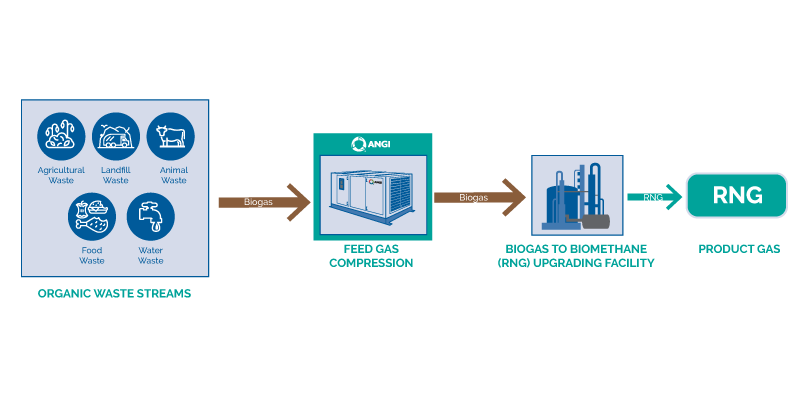Fueling a Circular Economy Through Feed Gas Compression
Feed gas compression is essential for harnessing biogas from organic waste streams, including animal waste, landfill waste, livestock waste, food waste, and wastewater. This biogas is compressed, purified, and upgraded into pipeline-quality product gas (RNG/biomethane).
Advanced Compression Solutions for Raw Biogas
Our compression solutions for raw biogas are designed to kickstart the gas separation process, effectively removing impurities to produce cleaner, purified product gas.
- Power Range: Compressors typically range from 100 to 600+ horsepower.
- Technology: Oil-flooded rotary screw packages ensure reliable performance and efficiency.
- Quality: Utilizing MYCOM compressor frames for durability and reliability.
- Scalability: Our scalable design allows for easy adjustments to meet varying operational demands.
Why ANGI Energy?

Advanced Control Systems
Equipped with advanced PLC control packages and highly flexible capacity control systems that adjust to varying operational demands, ensuring maximum efficiency.

Optimized Gas Management
Designed with variable output control systems that align with production output, enhancing operational efficiency and ensuring effective gas transfer.

Tailored Solutions
Both standard and tailored solutions developed by our team of engineers to meet specific customer requirements and operational needs.

Heavy-Duty Performance
Rated for continuous and intermittent duty cycles, utilizing Ariel compressors and leveraging our proven NG300E, NG600E, NG900E compression platforms, ensuring reliability and durability.


